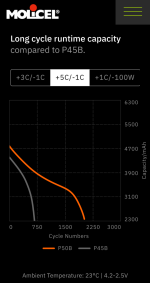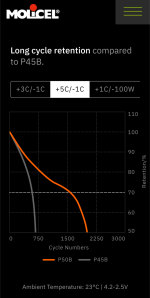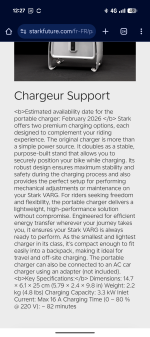Actually, if you recharge, at 25 A, some series of P50B let's say made up of 100 cells each, it will be done at a voltage that will be roughly 360 V and that will rise during the charge, so the calculation isn't 25 A • 220 V = 5.5 kw; it's 25 A • 360 V = 9 kw and if you wanted to use a 220 V input current for the charger, it would be 25 C • 360 / 220 = 41 A. All this, of course, assuming a 100% efficiency.
Let's even say that he discharges the battery at 80 % (I don't know at which percentage a 6.6 kw charge would start to be reduced when getting close to 100%), consider that the charger is rated at 3.3 kw in the specification sheet downloadable at Stark's site, so he could even theoretically use an adapter and connect that charger to a charging station but he would't get more than that. After all, they would never allow a Shucko plug to pass more than 3.5 kw and I believe that it already gets 3.5 kw and roughly 0.2 kw are lost in inefficiency.






